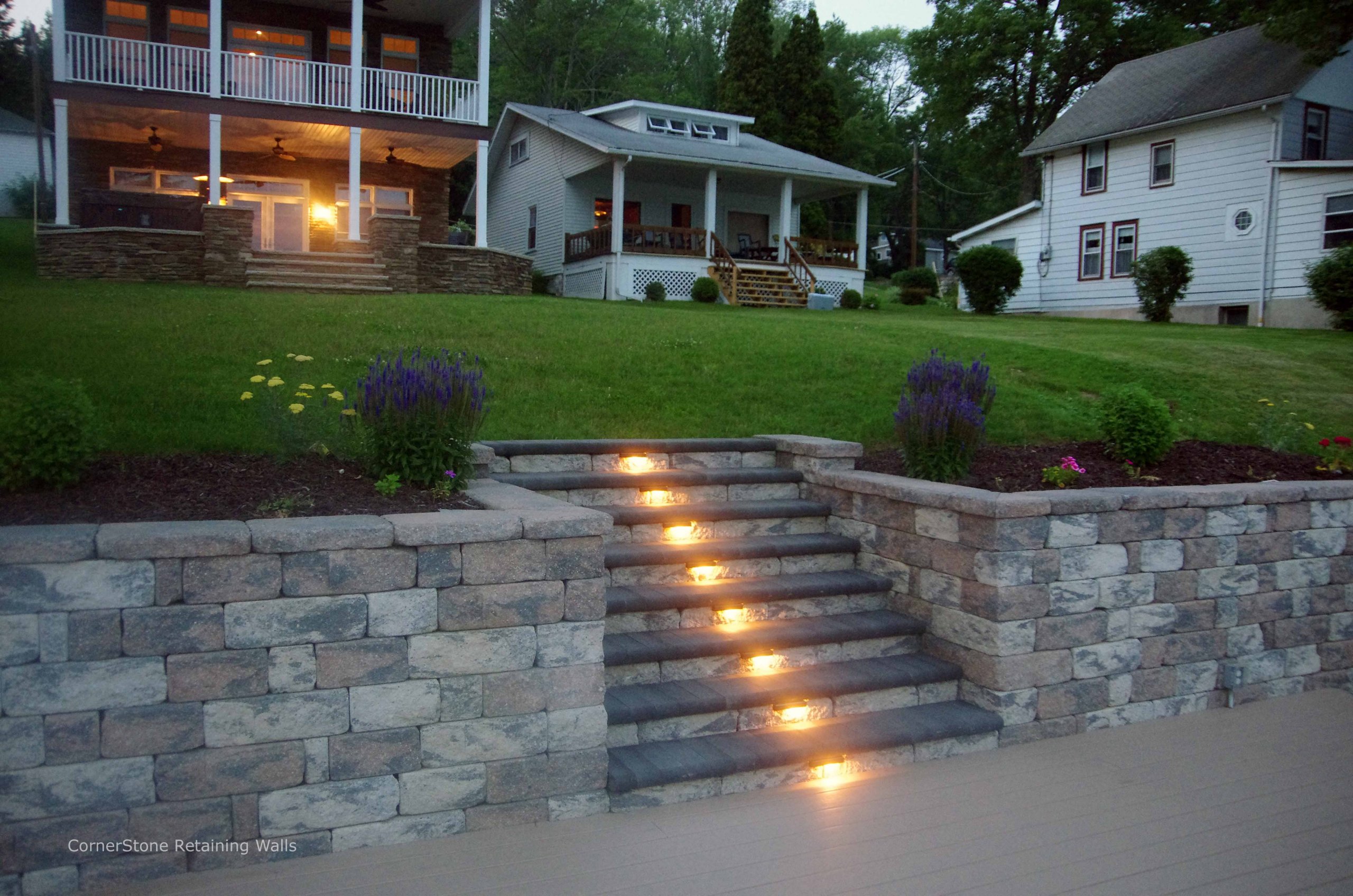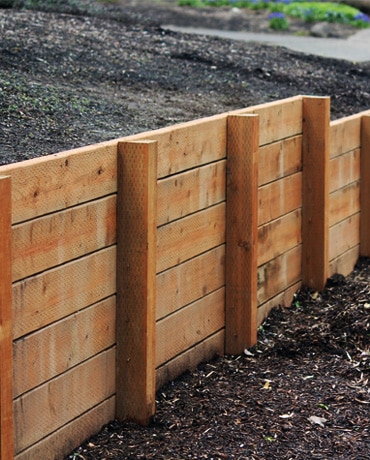Guaranteeing Structural Stability: The Relevance of Properly Constructed Retaining Walls in Preventing Slope Failure
In the realm of civil design and construction, the importance of appropriately constructed preserving wall surfaces in avoiding slope failing can not be understated. By discovering the elaborate interaction between these aspects, a deeper understanding of the critical function that keeping wall surfaces play in protecting architectural stability and preventing slope failing emerges.
Role of Retaining Walls in Security
The indispensability of maintaining walls in making sure slope security is vital in civil design practices. Preserving walls offer a critical function in avoiding dirt disintegration, managing water overflow, and keeping the structural stability of inclines. By sustaining vertical or near-vertical quality modifications, retaining walls assist to rearrange side pressure exerted by the soil, consequently lowering the risk of slope failing.
One key function of maintaining wall surfaces is to neutralize the force of gravity acting upon the soil mass behind them. This is achieved with appropriate layout and construction, which thinks about elements such as dirt kind, wall height, drain provisions, and prospective surcharge tons. By properly retaining dirt within specified boundaries, these structures help to stabilize slopes and avoid landslides.
In addition, retaining wall surfaces add to the aesthetics of landscapes while providing functional benefits. They can develop terraced levels for landscape design, assistance streets or structures on hills, and boost the total use of sloped surface. Fundamentally, preserving wall surfaces play an important function in maintaining slope security and guaranteeing the safety and longevity of civil design tasks.
Aspects Influencing Wall Efficiency
Aspects that influence the effectiveness of retaining wall surfaces include soil properties, wall surface style, and outside tons. Soil properties play a crucial role in establishing the stability and efficiency of a maintaining wall. Variables such as soil kind, cohesion, interior friction angle, and groundwater conditions can influence how well a wall keeps the soil behind it. The layout of the keeping wall surface is one more key element that affects its efficiency. Proper wall surface design thinks about aspects like wall elevation, wall kind (e.g., gravity wall surfaces, cantilever walls), support materials, drainage systems, and building methods to make certain the wall can withstand the side stress exerted by the maintained dirt. Furthermore, outside lots, such as surcharge lots from adjacent structures or website traffic, seismic forces, and water stress, must be very carefully reviewed during the style and construction phases to make sure the wall surface can sufficiently stand up to these external forces. By taking into consideration these elements thoroughly, designers can create retaining wall surfaces that efficiently stop incline failing and guarantee lasting architectural stability.
Layout Factors To Consider for Preserving Walls
Incorporating the crucial elements of soil buildings and outside loads right into the architectural style process is essential for creating effective preserving wall surfaces that ensure incline stability. When designing preserving wall surfaces, engineers should very carefully review the features of the surrounding soil, including its compaction, drain, and type properties. Recognizing these dirt residential properties is critical for establishing the proper wall elevation, thickness, and reinforcement needed to stand up to the side pressure applied by the soil mass.
Additionally, external loads such as additional charge tons from neighboring structures or web traffic, along with seismic forces, should be taken right into account during the style stage. These lots can substantially impact the stability and performance of a preserving wall surface, necessitating making use of appropriate layout techniques and materials to alleviate possible failing risks.
In addition, the option of suitable materials, such as concrete, stone, or lumber, need to line up with the aesthetic demands and site-specific problems. Factor of security factors to consider, water drainage stipulations, and construction techniques are also crucial elements that influence the general style and performance of keeping walls in protecting against slope failing. By carefully considering these design considerations, engineers can make certain the architectural honesty and lasting security of keeping walls.

Building And Construction Best Practices for Resilience
When creating maintaining walls for optimum sturdiness and longevity, adherence to industry-standard methods and meticulous attention to information are critical. To make certain the toughness of a keeping wall surface, proper website preparation is essential.
Integrating support techniques, such as geogrids or steel bars, can improve the structural stability of the maintaining wall surface and avoid prospective failings. Proper backfilling treatments, consisting of compaction and drainage considerations, are likewise crucial for the wall surface's sturdiness. Normal maintenance and evaluations are suggested to attend to any kind of signs of wear, erosion, or structural concerns promptly. By following these construction best methods, maintaining wall surfaces can withstand the test of time and efficiently stop incline failure.
Value of Appropriate Upkeep
Regular upkeep is vital for preserving the architectural integrity and capability of keeping wall surfaces over time. To ensure that keeping walls proceed to perform their designated feature efficiently, regular assessments should be carried out to recognize any indications of wear and tear.

Verdict
To conclude, keeping wall surfaces play an important discover this function in making certain architectural integrity and avoiding slope failure. By considering elements influencing wall effectiveness, adhering to design considerations, following building best practices, and implementing appropriate upkeep, the longevity of preserving wall surfaces can be made the most of. Retaining Walls Sunshine Coast. It is important to acknowledge the significance of appropriately built maintaining walls in maintaining security and stopping potential hazards connected with slope failing
Aspects that influence the effectiveness of preserving walls include soil homes, wall layout, and outside loads. Correct wall design considers variables like wall height, wall surface type (e.g., gravity wall surfaces, cantilever walls), support products, drain systems, and building and construction methods to ensure the wall surface can endure the lateral stress applied by the maintained soil. By thinking about these factors adequately, engineers can create keeping wall surfaces that efficiently protect against slope failing and guarantee lasting structural stability.
Maintenance tasks might include clearing drainage systems to stop water buildup behind the wall surface, fixing any noticeable fractures or damages, and guaranteeing that the wall surface is complimentary from plant life that might apply stress on the structure. By thinking about variables influencing wall efficiency, adhering to create factors to consider, following building and construction best methods, and implementing appropriate read more upkeep, the durability of keeping wall surfaces can be taken full advantage of.